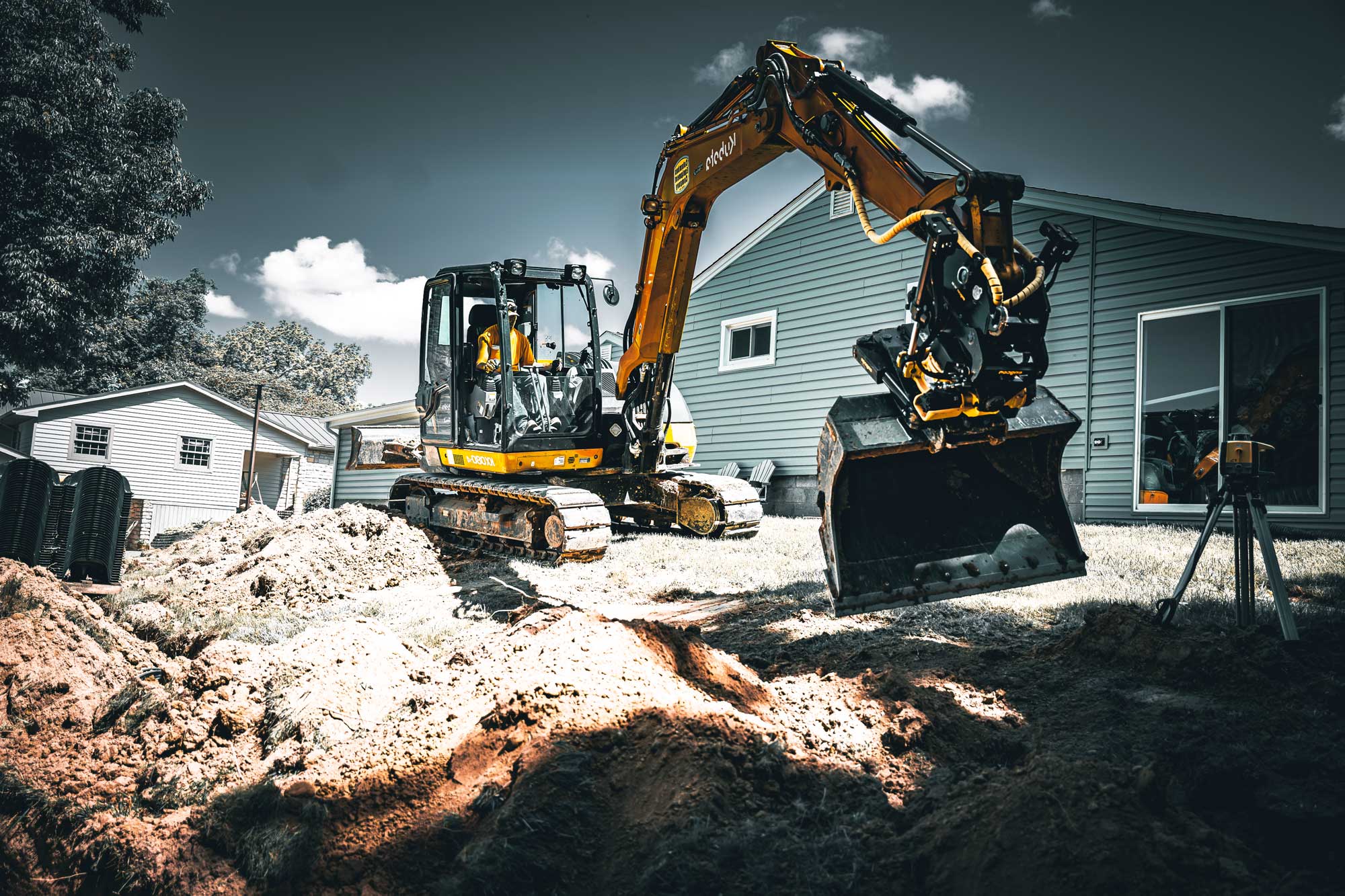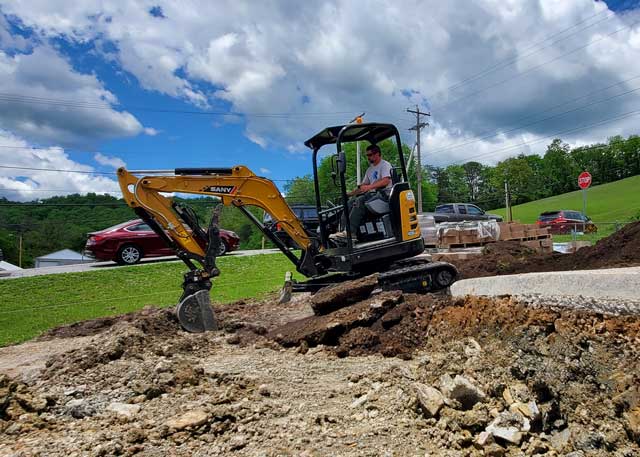Lancaster Trenching - Specialist Trenching Solutions in Lancaster, Ohio
Lancaster Trenching - Specialist Trenching Solutions in Lancaster, Ohio
Blog Article
In-Depth Exploration: The Scientific Research Behind Superior Excavation Practices
From ancient hand tools to contemporary hydraulic excavators, the evolution of excavation techniques has been a testament to human ingenuity and technological innovations. What really establishes superior excavation practices apart is a deep understanding of geological concepts, paired with the usage of advanced tools and methodologies.
Evolution of Excavation Strategies
Throughout history, the evolution of excavation strategies has played a crucial role ahead of time building and construction methods and archaeological explorations. From the fundamental devices used by our ancestors to the sophisticated equipment employed in contemporary times, the development of excavation methods has significantly transformed how we approach various tasks.
In ancient times, manual labor with standard tools such as pickaxes, shovels, and wheelbarrows was the primary technique of excavation. This labor-intensive procedure restricted the deepness and extent of excavations, usually leading to slow-moving progress and restricted accessibility to particular websites. However, as people advanced, so did the methods and devices made use of for excavation.
The Industrial Transformation noted a transforming point in excavation experiment the introduction of steam-powered machinery. This development reinvented the area, allowing for faster and much more substantial excavations. In contemporary times, technology plays a critical function in excavation, with improvements like general practitioner systems, drones, and 3D scanning enhancing accuracy and performance in the field. The development of excavation techniques remains to form the method we build, explore, and comprehend the world around us.
Role of Innovation in Excavation

The integration of innovative modern technology has actually essentially transformed the field of excavation, enhancing accuracy and performance to extraordinary levels. Among the vital technological advancements that has actually considerably affected excavation practices is the utilization of GPS systems. These systems enable for precise mapping of excavation sites, allowing operators to accurately locate underground energies and structures. Additionally, making use of telematics in excavation tools has actually made it possible for real-time tracking of maker performance, resulting in aggressive upkeep and enhanced functional efficiency.
Moreover, the arrival of 3D modeling and simulation software has streamlined the preparation process for excavation tasks. Engineers and drivers can now picture the entire excavation process before damaging ground, optimizing and recognizing possible difficulties operations. Together with this, the implementation of drones in excavation activities has actually promoted aerial studies, volumetric dimensions, and website examinations with unequaled rate and accuracy.
Geological Principles in Excavation
An understanding of geological principles is essential for making certain the structural integrity and security of excavation websites. Geological elements play a crucial function in determining the feasibility and security of excavation projects (excavating ohio). One crucial geological concept to take into consideration is the sort of dirt or rock present at the site. Various soil types, such as sand, gravel, or clay, have differing degrees of stability and need various excavation methods. Cohesive dirts like clay may require added assistance to stop collapses, while sandy soils might be vulnerable to erosion throughout excavation.
By performing extensive geological studies and analysis, engineers and excavators can create methods to mitigate threats and make sure the effective completion of excavation projects. Inevitably, integrating geological concepts into excavation techniques is critical for attaining secure, reliable, and lasting results.

Most Current Tools for Excavation
In the world of excavation methods, contemporary developments in devices have actually reinvented the performance and precision of excavation procedures. Among the current devices making waves in websites the industry is making use of drones outfitted with innovative imaging modern technology. These drones can offer comprehensive aerial surveys of excavation websites, supplying real-time information on topography and prospective hazards. This information aids in much better preparation and decision-making throughout the excavation procedure.
Another cutting-edge tool getting popularity is the execution of 3D printing innovation for developing customized excavation tools. This permits for the production of specialized devices that are tailored to the particular requirements i was reading this of a task, enhancing effectiveness and minimizing downtime.
Additionally, advancements in products science have led to the advancement of stronger and a lot more durable excavation devices. lancaster trenching. Tungsten carbide-tipped excavator add-ons, for instance, deal exceptional efficiency in challenging ground conditions, enhancing efficiency on-site
Scientific research's Influence on Excavation Practices

Furthermore, advancements in products science have actually brought about the development of more powerful, more sturdy excavation devices and tools. For example, using composite materials in shovels and miners has actually improved their performance and longevity, ultimately raising productivity on excavation sites. In addition, scientific research study on soil mechanics and geotechnical design has provided valuable understandings into dirt behavior, enabling excavation specialists to make educated choices concerning excavation approaches and soil stabilization strategies. In general, scientific research continues to drive innovation and enhancement in excavation techniques, making excavation projects a lot more reliable, economical, and lasting.

Conclusion
To conclude, the advancement of excavation methods has actually been substantially affected by developments in technology and a deeper understanding of geological principles. The current tools and devices made use of in excavation have actually enhanced efficiency and precision in the area. The application of scientific knowledge has actually dramatically improved excavation view it now practices, leading to extra efficient and sustainable techniques for excavating numerous types of products.
In the world of excavation techniques, modern technologies in devices have actually reinvented the effectiveness and precision of excavation procedures. By leveraging clinical concepts, the excavation market has actually been able to considerably improve efficiency, precision, and security in excavation processes. GPR allows excavation groups to non-invasively scan and map subsurface structures, utilities, and potential dangers, enabling them to intend excavation tasks with better precision and reduced risk of accidents.
In addition, clinical research study on soil mechanics and geotechnical design has actually offered important understandings right into soil actions, enabling excavation professionals to make enlightened decisions regarding excavation approaches and soil stablizing methods. Overall, scientific research continues to drive innovation and renovation in excavation practices, making excavation tasks much more reliable, economical, and sustainable.
Report this page